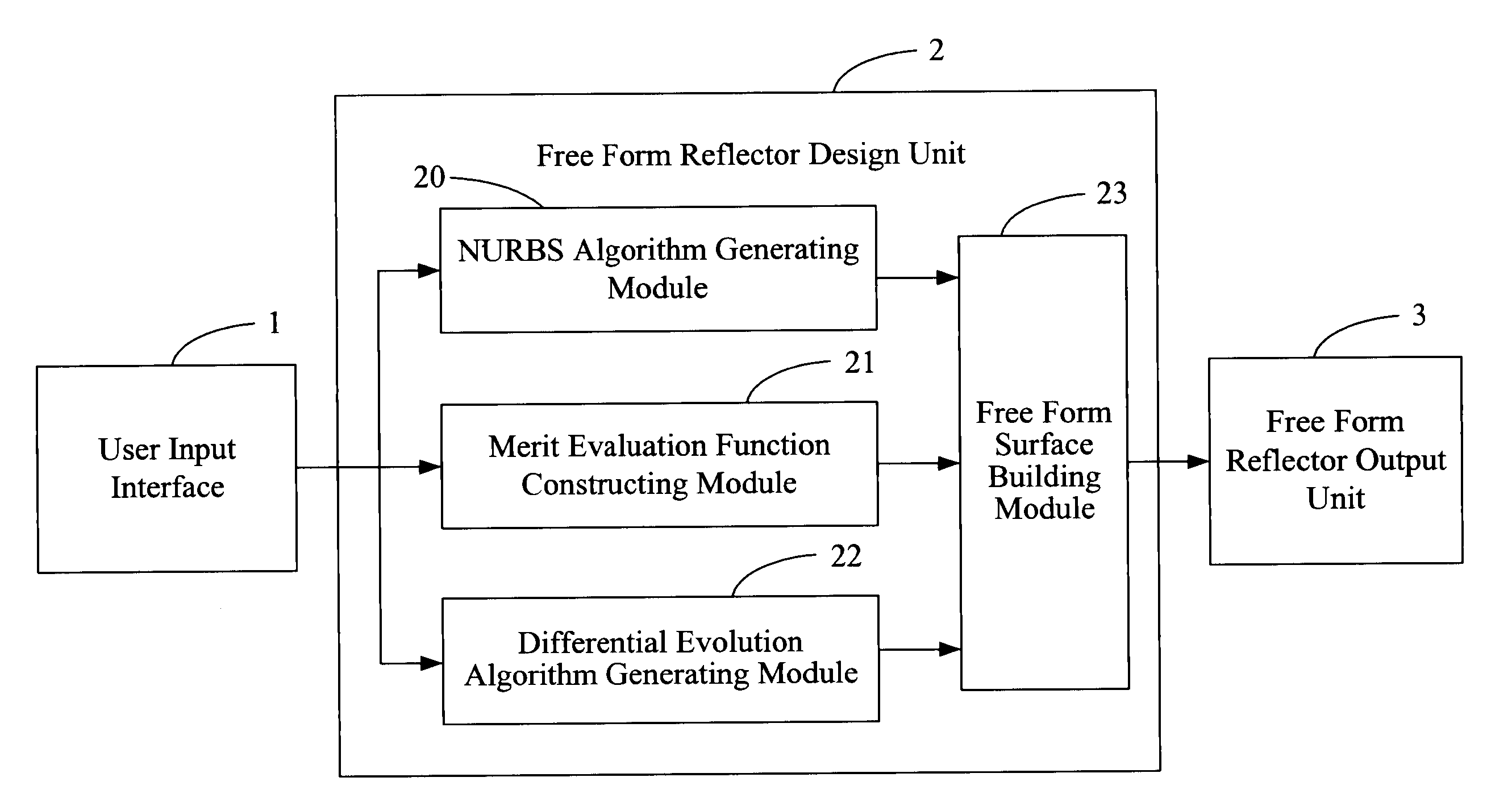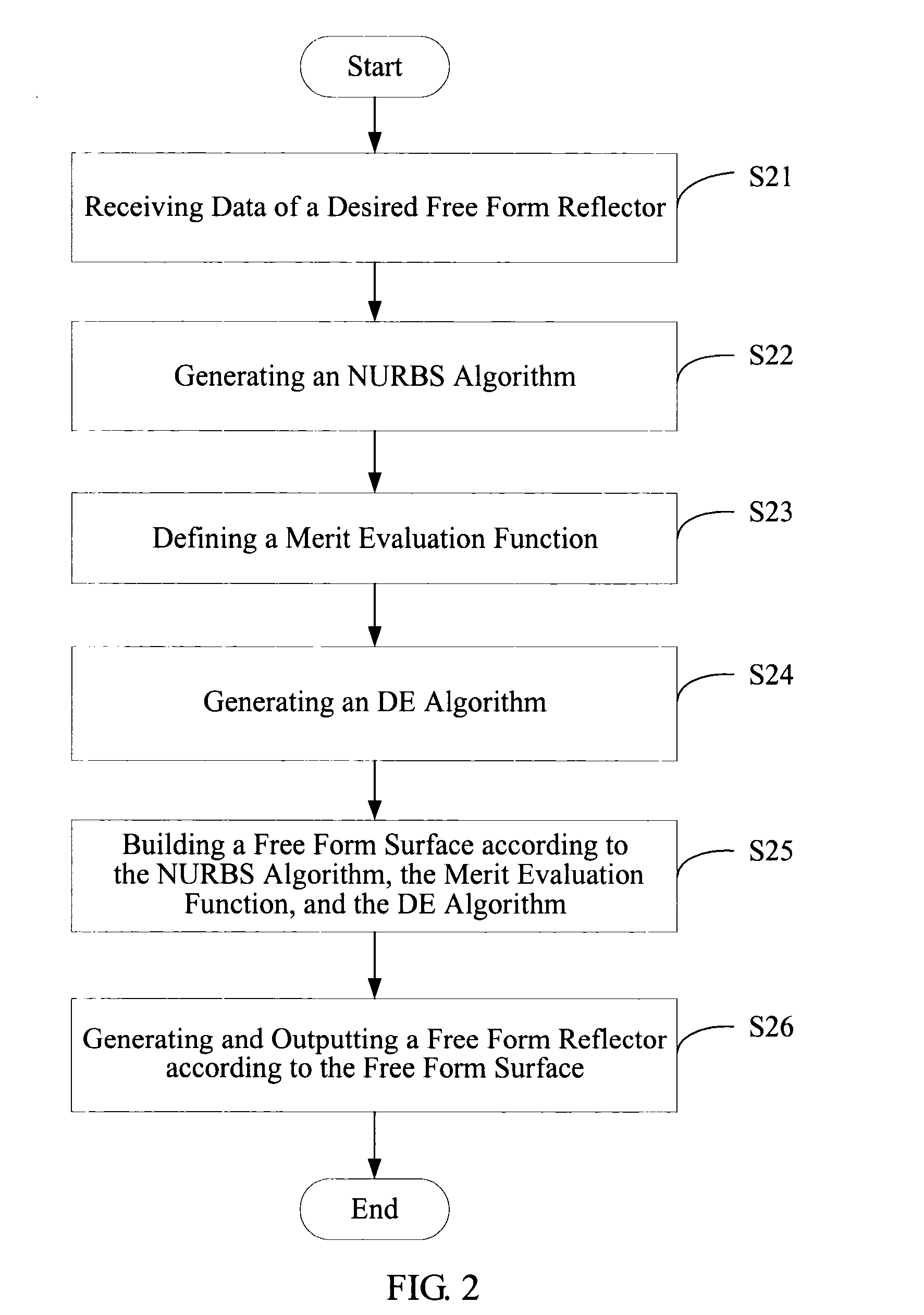System and method for designing a free form reflector
- Summary
- Abstract
- Description
- Claims
- Application Information
AI Technical Summary
Benefits of technology
Problems solved by technology
Method used
Image
Examples
Embodiment Construction
[0030]FIG. 1 is a schematic diagram illustrating a system for designing a free form reflector (hereinafter “the system”) in accordance with a preferred embodiment. The system mainly includes a user input interface 1, a free form reflector design unit 2 and a free form reflector output unit 3.
[0031]The user input interface 1 is configured for receiving various data associated with a desired free form reflector input by a user from an input device (e.g., a keyboard). The data typically include desired dimensions, desired illuminance distributions, and searching limits of the free form reflector.
[0032]The free form reflector design unit 2 installed in a computer is configured for generating an optimum free form surface according to the input data by performing a non-uniform rational basis splines (NURBS) algorithm, a merit evaluation function, and a differential evolution (DE) algorithm. The free form reflector design unit 2 includes an NURBS algorithm generating module 20, a merit eva...
PUM
 Login to View More
Login to View More Abstract
Description
Claims
Application Information
 Login to View More
Login to View More - R&D
- Intellectual Property
- Life Sciences
- Materials
- Tech Scout
- Unparalleled Data Quality
- Higher Quality Content
- 60% Fewer Hallucinations
Browse by: Latest US Patents, China's latest patents, Technical Efficacy Thesaurus, Application Domain, Technology Topic, Popular Technical Reports.
© 2025 PatSnap. All rights reserved.Legal|Privacy policy|Modern Slavery Act Transparency Statement|Sitemap|About US| Contact US: help@patsnap.com



